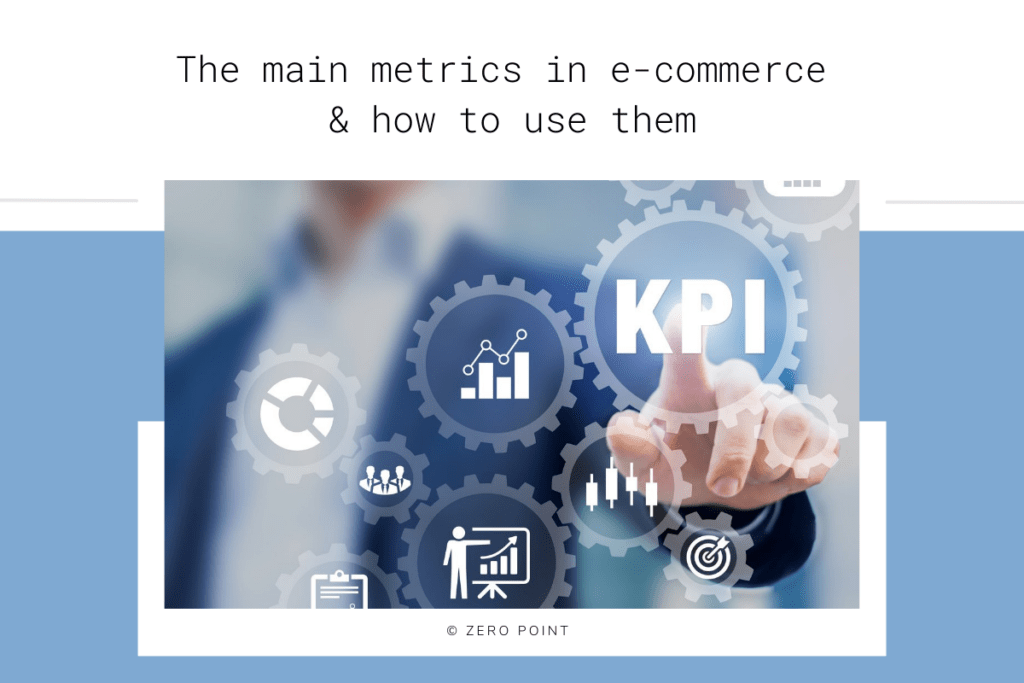The main metrics in e-commerce & how to use them
Selling things online has never been easier and more difficult at the same time
On one hand, platforms like Amazon, eBay and Etsy have all reduced the barrier to entry for new retailers. However, the success of an online store presupposes that many data and parameters must be monitored and analyzed at the same time. The most successful e-commerce companies are those that can make good use of metrics to make informed decisions. This does not mean, however, that you need to monitor every metric available to you, as the key is to optimize the metrics that have the greatest impact on your business.
To guide you in the right direction, here is a list of the 4 most important e-commerce metrics you should monitor and optimize.
– Conversion Rate (sales)
Sales conversion rate is the percentage of people who visit your online store to make to those who make a purchase. For example, if 1,000 people visited your store this week and only 10 people made a purchase, your conversion rate for the week would be 1%. The higher the conversion rate, the better.
As for ways to optimize your conversion rate, here are some practices you may want to consider:
– Upload high quality product images
– Optimise product listings using keywords
– Provide coupon codes (with limited duration)
– Reduce page load time
– Optimise your mobile website
– Send reminders to those who abandoned the shopping cart
– Website Traffic
After tracking and optimizing your conversion rate, you can then focus on attracting more users to your eCommerce store.
Let’s get back to your conversion rate of 1% or 10 purchases for every 1,000 visitors. After optimization, let’s assume that this percentage increased to 5% – 50 sales for every 1,000 visitors. We can assume that if 10,000 people visited your website, your sales would also double. This is not guaranteed, of course, but it is important to ensure the branding of your business in order to drive more traffic to your website and generate more sales.
To increase traffic to your site, you can:
– Promote your offers on social media
– Optimise your online store for search engines (SEO)
– Increase the number of subscribers to your newsletter
– Advertise your online store through Google Ads or Social Ads
– Average Order Value
As the name implies, this metric refers to the average value of each purchase made in your store. To calculate it, simply divide the sum of the revenue of all sales by the number of sales made.
Tracking average order value lets you set benchmarks and understand how to drive users to spend more on each purchase they make.
Here are some ways to increase that metric:
– Use regular cross sells to your customers (complementary products that improve the usability of their main market)
– Advertise your online store through Google Ads or Social Ads
– Create a product mix as a package, so that customers receive a small discount (as opposed to buying each product separately)
– Offer free shipping for purchases above a certain limit to entice customers to maximize average order value
– Cost of Acquisition (per customer)
While increasing the customer base is obviously significant, it is only half the equation.
If you spend an average of € 30 to get each customer, but the average value of their order is only € 25, it means that your business is operating at a loss. For this reason, measuring customer acquisition costs is one of the most important metrics.
The cost of acquiring a customer includes marketing and sales costs, staff costs, shipping costs and fixed operating costs of your e-store such as maintenance and hosting.
You can also calculate the cost of getting a customer by source (eg different traffic channels, such as search engines, social media or email marketing).
To reduce this metric you can:
– Improve your conversion rate
– Optimize your ad to spend less on each customer you acquire
– Invest in organic marketing like SEO and social media marketing
– Invest in referral marketing to encourage existing customers to recommend new ones
